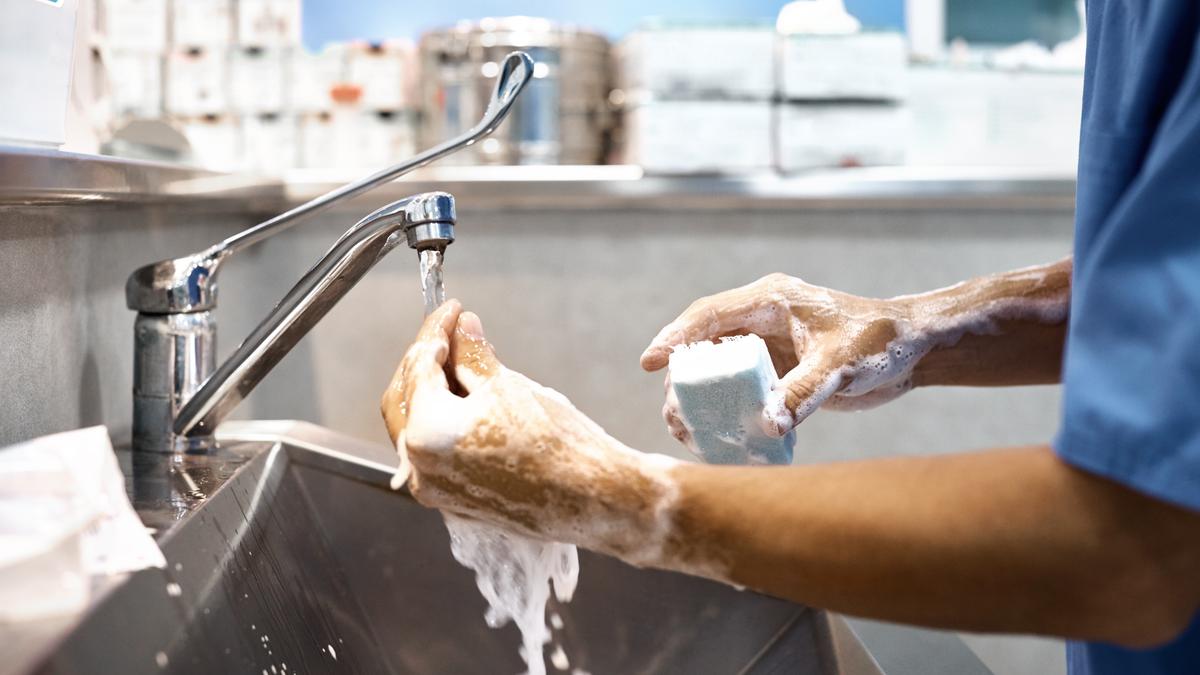In the aftermath of the unprecedented COVID-19 pandemic, the unsung hero of public health has been revealed as hand hygiene, seamlessly integrating itself into the tapestry of our daily lives with unparalleled dedication. What was once a routine act of hand washing metamorphosed into a ritualistic defence mechanism, a formidable shield against an invisible adversary. Society collectively adopted the meticulous art of thorough hand cleansing, elevating hand sanitizers to the status of ubiquitous accessories.
Fast-forward to the present, and the narrative has evolved. The once-ritualistic hand washing, is now a fading custom. As the immediacy of the pandemic diminishes, so does the stringent adherence to hand hygiene practices. The journey from the meticulous choreography of handwashing to its present state symbolises the evolving narrative of a society transitioning from heightened alertness to a semblance of normalcy.
Simple but powerful tool
In the arsenal of preventative measures during the pandemic, handwashing emerged as a simple yet powerful tool in the fight against the highly contagious SARS-CoV-2 virus. As the pandemic unfolded, public health experts and authorities globally emphasised the significance of regular handwashing as a fundamental practice to reduce transmission rates and protect individuals from infection.
Correct handwashing involves using soap and water to cleanse hands thoroughly, eliminating not only visible dirt but also invisible pathogens, including viruses and bacteria. The mechanical action of rubbing hands together while washing, combined with the soap’s ability to break down the viral lipid envelope, proved highly effective in reducing the risk of infection.
Initiated in 2008 with the goal of mobilising people worldwide to wash their hands, Global Handwashing Day is celebrated annually on October 15. This year’s theme is ‘Clean hands are within reach.’
Speaking to The Hindu, Ranga Reddy Burri, President of the Infection Control Academy of India, highlighted how COVID-19 served as a silver lining, underscoring the importance of handwashing. He emphasised that handwashing is a simple intervention that doesn’t require extensive resources. It is a crucial practice that can significantly reduce the burden of various diseases, such as flu, diarrheal disorders, and upper respiratory tract infections. In fact, proper handwashing can potentially halve child mortality, especially in low and middle-income countries.
Dr. Burri pointed out that in many developing countries, diarrhoeal disorders remain a significant burden. Improving hand hygiene in communities could reduce such disorders by at least 50%. The major impediment to this improvement is a behavioural one, as people are often not taught about the necessity of handwashing from childhood, especially after defecation, travelling, and eating. While installing such practices in adults under ordinary circumstances can be challenging, extraordinary situations like the COVID-19 pandemic have proven effective in altering behaviour due to fear, he said.
Activating schools
To ensure widespread public awareness, activating schools to engage in such projects is crucial. This involves not only incorporating these initiatives into the curriculum but also promoting them as integral to overall good health practices. Such efforts not only contribute to immediate health benefits but also enhance our readiness for future pandemics and epidemics. Dr. Burri emphasised that heightened individual preparedness translates into elevated global health preparedness.
A 2019 World Health Organization (WHO) report disclosed alarming statistics: nearly 384,000 deaths due to diarrhoea and 20 million Disability-Adjusted Life Years (DALYs) were linked to inadequate hand hygiene practices. This issue was particularly pronounced in Africa and South-East Asia.
In October 2022, the United Nations International Children’s Emergency Fund (UNICEF) conducted a comprehensive study in India focusing on the bottleneck analysis of hand hygiene programming. The study’s key findings unveiled that 76% of households in the region possess a functional tap connection. Moreover, a notable 91% of respondents acknowledged the importance of washing hands with soap in reducing the risk of disease transmission.
However, the study also brought to light some concerning gaps in knowledge about handwashing practices. Specifically, 15% of respondents were unaware of even a single step in the proper handwashing process, while 30% demonstrated awareness of all the correct steps. The data further indicated that 79% of individuals were aware of the need to wash hands with soap after using the toilet, with slightly lower percentages for other scenarios: 77% before meals, 62% after returning from outside, 40% after cleaning homes or handling garbage, 30% after coming into contact with sick individuals, and 19% after sneezing or coughing.
One significant revelation from the study was the absence of budgeted activities within the Departments of Women and Child Development, Health and Family Welfare, and Education dedicated to promoting hand hygiene. The study emphasised that none of these departments had allocated funds for initiatives specifically targeting hand hygiene promotion. Additionally, the study underscored the urgent need for improvements in Anganwadi centres, noting a lack of basic hand washing infrastructure, including inadequate water supply for children. The study concluded by highlighting the imperative for prompt upgrades to address these deficiencies in hand hygiene facilities.
No Need for antimicrobial soaps
In routine hand washing scenarios, there is no need for antibacterial soaps. The public is advised to steer clear of antibacterial soaps under normal circumstances and to avoid hand sanitizers unless access to tap water or a sink is limited. A basic, traditional hand soap suffices to maintain hygiene and prevent infections. The post-COVID surge in disinfectant and antiseptic usage is cautioned against, as it may lead to consequences akin to the current Antimicrobial Resistance (AMR).
Kiran Madala, Scientific Committee Convenor of Indian Medical Association Telangana State warned that, just as with AMR, there is a looming threat of antiseptic and disinfectant resistance, emphasising that no chemical is entirely benign and that all substances have their own effects and potential side effects.
Way Forward
In order to ensure a consistent and effective messaging strategy on the importance of handwashing, the government needs to establish a cohesive communication framework. This should involve a structured approach, akin to a pyramid, connecting ASHA workers at the grassroots level to tertiary care hospitals. Drawing inspiration from successful past campaigns like ‘Hum Do Hamare Do’ for the 2-child policy and door-to-door polio immunisation drives, the government should prioritise handwashing as a top-three agenda item.
The need for a sustained and consistent campaign cannot be overstated. In the same vein as previous initiatives, incorporating a memorable jingle can enhance the public’s awareness of the significance of hand hygiene. On another front, addressing the inadequacies in infrastructure is crucial. Even in urban areas, the lack of accessible and sanitary public restrooms poses a significant challenge, contributing to the spread of infections. The government must direct its attention toward developing public facilities for defecation and urination, ensuring not only their availability but also maintaining high standards of hygiene, shared a government doctor from a tertiary care hospital.
Furthermore, integrating hand hygiene into the school curriculum is pivotal. By instilling these practices at a young age, we can establish lifelong habits. However, the effectiveness of such measures depends on the presence of adequate facilities and sanitation within government educational institutions. It is imperative that the government not only formulates educational programs but also invests in the necessary infrastructure to support these initiatives.
(Siddharth.kumar@thehindu.co.in)














